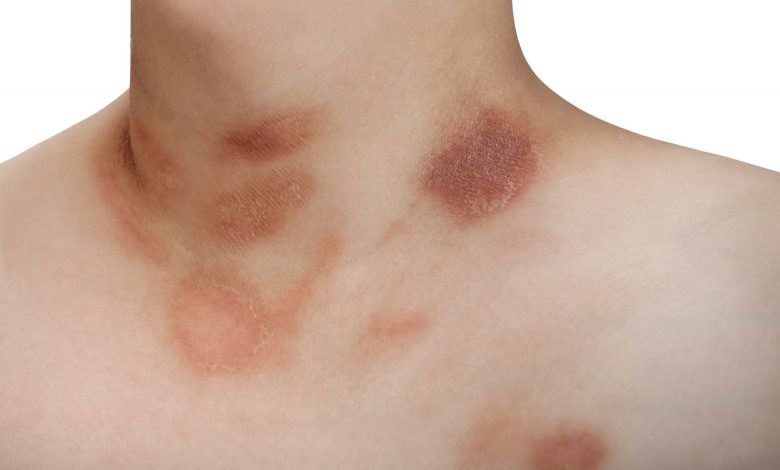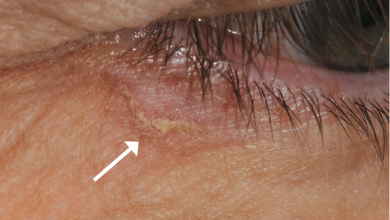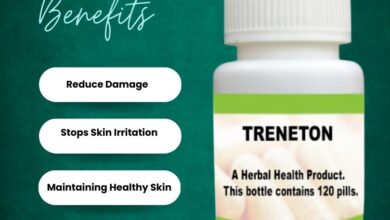How to Treat Flat and Scaly Lesions Naturally: Tips for Actinic Keratosis Patients

Are you dealing with flat and scaly lesions on your skin? If so, you may be one of the many individuals suffering from actinic keratosis. This common skin condition is characterized by rough, scaly patches that can appear on sun-exposed areas of the body such as the face, scalp, and hands. While there are various medical treatments available, some people prefer a more natural approach to managing their actinic keratosis. Some effective natural remedies for treating flat and scaly lesions, providing relief and promoting healthier skin. So, if you’re looking for an alternative to traditional methods, read on for our tips on actinic keratosis natural treatment.
Actinic Keratosis
Actinic Keratosis, characterized by dry, scaly, and Flat and Scaly Lesions, is a skin condition brought about by long-term exposure to the sun’s ultraviolet (UV) rays. If you tend to bask under the sun a lot, it’s time to be vigilant as this condition usually emerges in areas receiving the most sun, such as your face, the back of your hands, or your scalp, especially if you’re balding. What’s more alarming about Actinic Keratosis is its precancerous nature. This means that left untreated, it holds the potential to progress into skin cancer. But don’t fret just yet. By understanding Actinic Keratosis, you’re taking the first step towards proactive care and prevention. Now that you’ve recognized the potential harm excessive sun exposure can do, we can journey into early detection, Actinic Keratosis Natural Remedy, and preventive measures that can help manage Actinic Keratosis.
The Importance of Early Detection and Treatment
One of the stealthy aspects of Actinic Keratosis is that it can quietly progress unnoticed, often causing no pain or discomfort. Yet, its seemingly innocuous presence can mask a potentially serious condition. This makes early detection a critical component in managing this skin condition effectively. How do we achieve this? Regular self-examinations are your first line of defense. Taking the time to check your skin, especially sun-exposed areas, can help you spot any changes or suspicious lesions. Equally crucial are regular visits to a dermatologist. A skin expert can spot the subtlest changes and provide an accurate diagnosis, enabling immediate treatment. Remember, when it comes to Actinic Keratosis, time is of the essence. Prompt intervention after diagnosis can prevent the condition from progressing into squamous cell carcinoma, a common type of skin cancer. With early detection and treatment, you have the power to halt Actinic Keratosis in its tracks. It’s all about staying vigilant and proactive with your Flat and Scaly Lesions. So, make those self-checks and dermatologist appointments a regular part of your health routine.
Related Article: How You Can Remove Actinic Keratosis Eyelid with Herbal Tablets
Natural Remedies for Actinic Keratosis
Looking for a softer way to manage your Actinic Keratosis? You might want to consider the Actinic Keratosis Natural Remedy route. Treneton has made a name for itself for its skin healing properties and its ability to improve overall skin health, making it an excellent choice for Actinic Keratosis patients. Another natural remedy is Manuka Honey Actinic Keratosis. This isn’t your typical honey; it’s packed with antibacterial and healing properties. When applied topically, Manuka Honey Actinic Keratosis can soothe inflammation and accelerate the healing process. These natural remedies provide a kinder, gentler approach to dealing with Actinic Keratosis. However, it’s always a good idea to discuss any new treatment plan with your dermatologist. After all, Flat and Scaly Lesions is different, and what works for one person may not necessarily work for another. And, while we’re big fans of natural remedies, we must stress that they should complement, not replace, professional medical advice and Actinic Keratosis Natural Treatment. Be sure to keep open lines of communication with your skin specialist as you explore natural remedies for Actinic Keratosis.
The Role of Diet in Managing Actinic Keratosis
Eating your way to healthier skin may sound too good to be true, but with the right diet, it’s entirely possible! The foods you consume can be a powerful tool in your fight against Actinic Keratosis. A diet rich in antioxidants, like those found in vibrant fruits and vegetables, can work wonders for your skin. These antioxidants ward off skin damage by fighting free radicals that can harm your skin cells.
Furthermore, certain supplements can be a game-changer for your Flat and Scaly Lesions. Consider incorporating skin-boosting vitamins such as C and E into your dietary regimen. These potent vitamins not only aid in skin repair but also offer additional protection against sun damage, a primary culprit of Actinic Keratosis. To ensure that your dietary plan fits your health and nutritional needs, it’s recommended to get professional advice from a healthcare provider or a nutritionist.
Remember, your skin is a reflection of your overall health, and taking care of it extends beyond topical Actinic Keratosis Natural Treatment and sunscreens. So, when planning your next meal, think colorful fruits, leafy greens, and don’t forget your supplements. Your skin will reap the benefits, and you’ll be one step closer to managing your Actinic Keratosis effectively. Nourish your skin from the inside out, and watch it flourish!
The Benefits of Hydration and Moisturization
Unlocking the path to healthier skin with Actinic Keratosis might be as straightforward as keeping it hydrated and moisturized. These aren’t just buzzwords in the skincare world; they hold genuine power when it comes to nurturing your skin and combating Actinic Keratosis. Regular hydration does more than just quench your thirst; it also promotes skin cell regeneration and maintains the skin’s natural protective barrier, essential in warding off damaging elements. And let’s not forget moisturization. This critical step in your skincare regimen offers its share of benefits. An effective moisturizer works tirelessly to reduce the dryness and inflammation often seen in Actinic Keratosis. But the benefits don’t stop there. By keeping your skin supple and well-nourished, it also bolsters your skin’s natural defenses, making it better equipped to fight off the damaging effects of sun exposure, a prime instigator of Actinic Keratosis. Remember, your skin is thirsty for care. Give it the hydration and moisturization it craves, and it will reward you with its best appearance and health. So go ahead, pour that glass of water, reach for your moisturizer, and let’s quench your skin’s thirst together.
Related Article: How to Treat Actinic Keratosis Naturally with These 9 Home Remedies
Preventative Measures for Actinic Keratosis
Actinic Keratosis might be a sneaky condition, but there are concrete steps you can take to keep it at bay. Remember, prevention plays a crucial role in managing this skin issue. Regular skin check-ups, whether at home or with a dermatologist, are essential to catch any suspicious lesions early. But let’s not stop there. Make lifestyle changes that can help your skin stay resilient and healthy. Kick that smoking habit to the curb, and opt for a glass of water instead of an alcoholic drink. These habits can significantly affect your skin’s health and its ability to ward off conditions like Actinic Keratosis. And let’s not forget about the power of supplements. Incorporating a Hair Skin and Nails Supplement into your daily routine can further boost your skin’s health, helping it put up a strong fight against Actinic Keratosis. Your skin’s health is a reflection of your overall well-being, so let’s make these preventative measures part of your everyday life. Together, we can ensure that Actinic Keratosis is kept under control.
Sun Protection: Essential for Managing Actinic Keratosis
Sunshine might feel great on your Flat and Scaly Lesions, but too much can be detrimental, especially for those dealing with Actinic Keratosis. When the sun is out, or even peeping through the clouds, UV rays are at play. These rays, despite being invisible to the naked eye, are incredibly powerful and can cause significant harm to your skin, including Actinic Keratosis.
However, there’s good news! You can outsmart these pesky UV rays and protect your skin effectively. One of the most straightforward ways is by wearing a broad-spectrum sunscreen consistently. It doesn’t matter if it’s a scorcher of a day or seemingly overcast, slather that sunscreen on. Remember, UV rays don’t discriminate based on weather; they’re always ready to do their damage.
But, your arsenal against sun damage shouldn’t stop at sunscreen. There are more ways to protect your skin. Incorporate protective clothing into your wardrobe. Think loose, long-sleeved tops, pants, and not forgetting a hat with a wide brim to shield your face and neck. And while you’re accessorizing, add a pair of sunglasses into the mix to protect those peepers of yours too.
And of course, where possible, seek out the shade. Especially during peak sunlight hours, when the sun’s rays are most potent. So, grab your sunscreen, suit up in your protective gear, and confidently step out, knowing you’re doing your part in managing your Actinic Keratosis.
Protective Measures against Sun Exposure
As we strive to keep our skin healthy and radiant, it’s essential to incorporate protective measures against sun exposure into our daily routines. Even when the sky is overcast, remember that UV rays are still active, posing a Flat and Scaly Lesions. Sunglasses are not just a stylish accessory but also a vital shield for your eyes against these harmful rays. Opt for a pair that blocks out 100% of both UVA and UVB rays for maximum protection.
Similarly, a wide-brimmed hat serves a dual purpose. Not only does it add a touch of sophistication to your outfit, but it also plays a crucial role in safeguarding your face and neck from the sun. Preferably choose one made of tightly woven fabric or with a UPF (Ultraviolet Protection Factor) label, as these offer the best protection.
Seeking shade is another effective strategy, especially during the sun’s peak hours, typically between 10 a.m. and 4 p.m. If you can’t avoid being outdoors during these hours, try to stay in the shade as much as possible. An umbrella or a shaded spot under a tree can be your best friend during these times.
Keep in mind, these measures should supplement, not replace, the use of a broad-spectrum sunscreen. These combined efforts can significantly reduce the risk of Actinic Keratosis, other skin conditions, and premature skin aging. Remember, Best Supplements for Skin protecting your skin is a daily commitment. But with these simple yet effective protective measures, you can enjoy the outdoors while keeping your skin safe and healthy.




